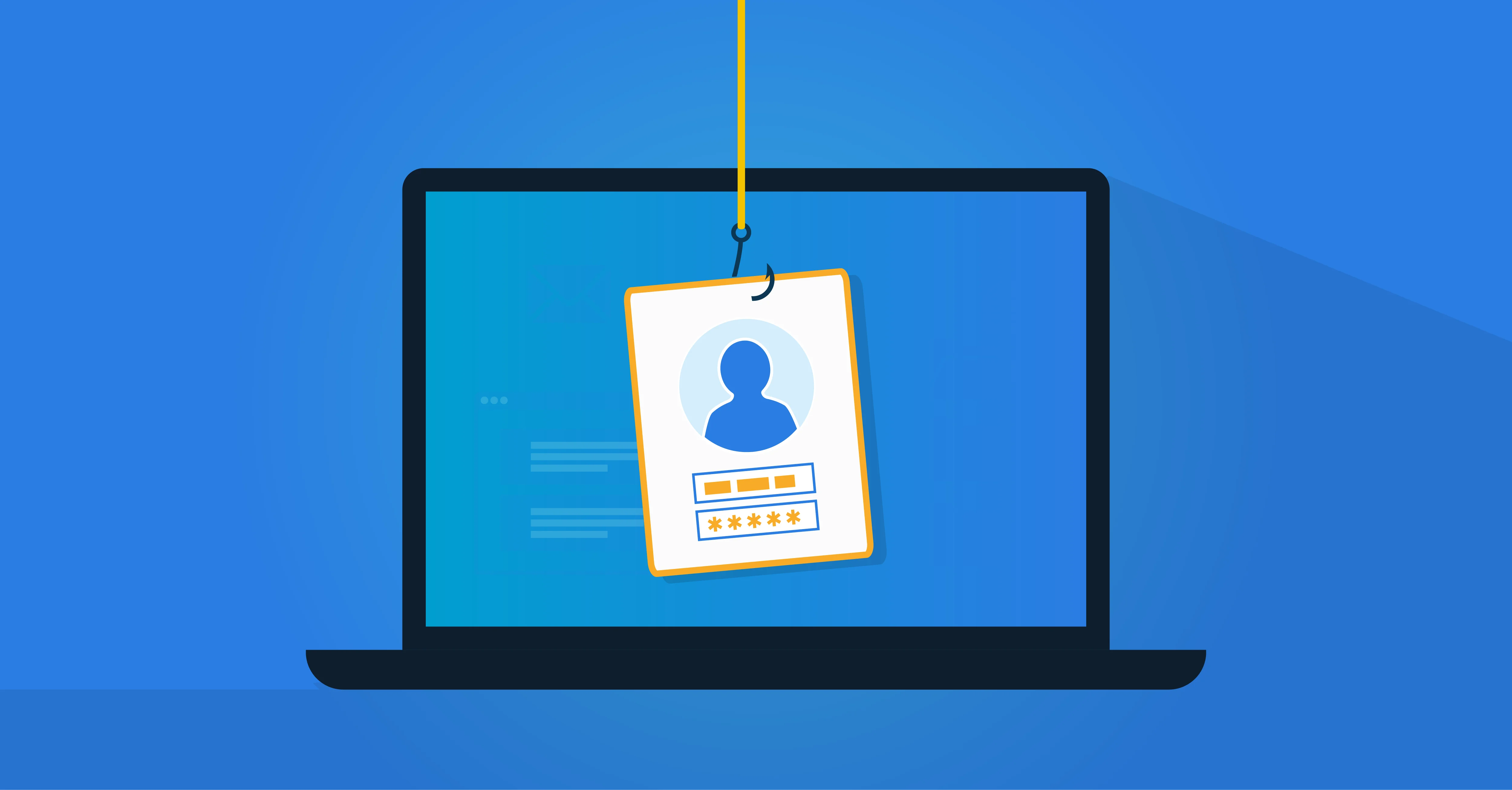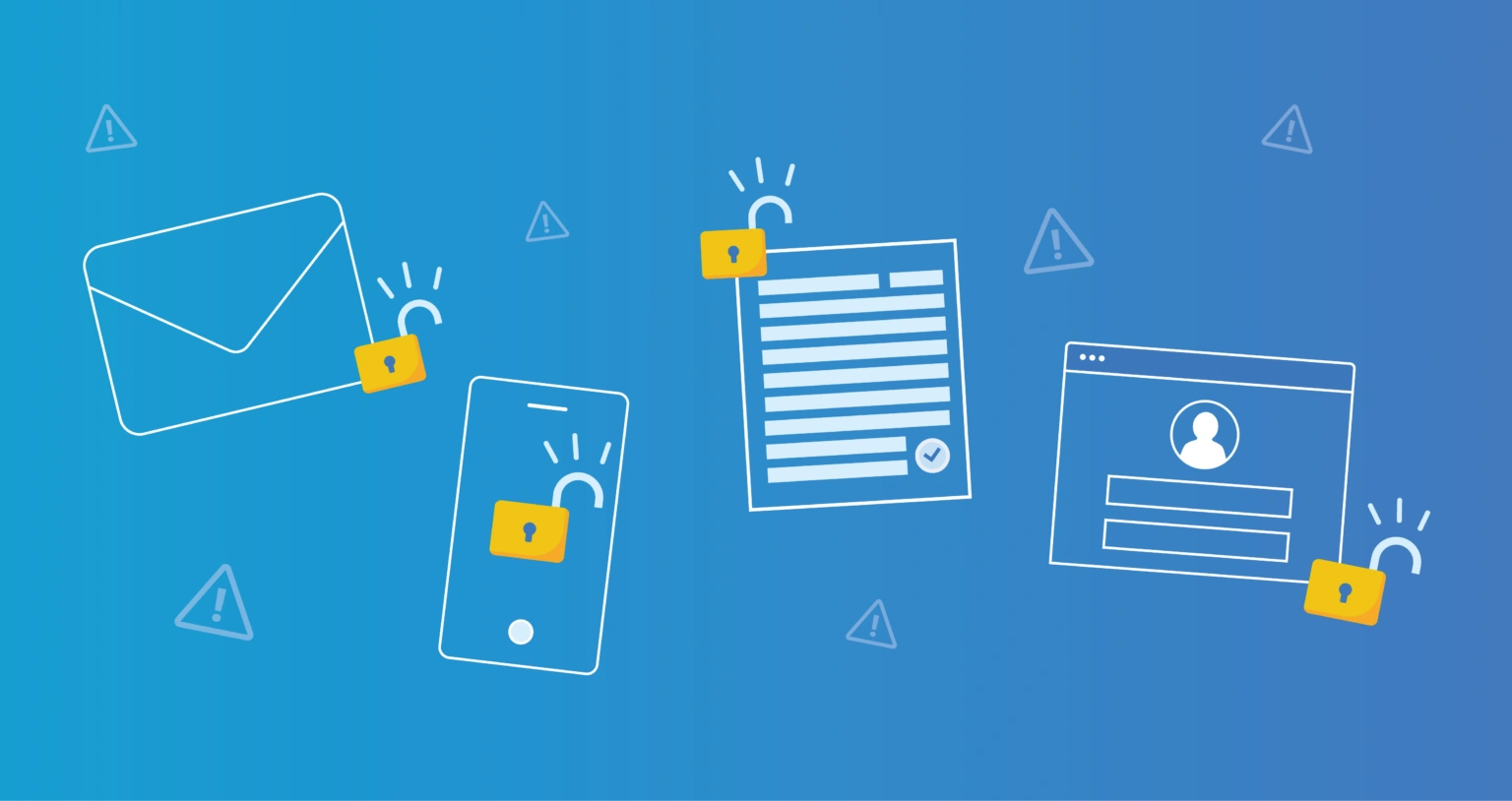
Phishing
What is Phishing?
Phishing is a type of internet fraud where someone pretends to be a trustworthy entity to steal personal information, such as passwords or credit card numbers, most often through fake emails that look real.
Example of a Phishing Email
Phishing emails may seem like normal emails at first glance, but they often have recognizable patterns and characteristics upon closer inspection.
Here are some features by which you can recognize them:
Deceptive links: They often contain links that look like legitimate websites but lead to fake pages.
Urgency: They create a sense of urgency, prompting you to act quickly (e.g., threatening to close your account or an offer that seems too good to be true).
Request for personal information: They often ask for sensitive information such as passwords, banking details, or social security numbers.
Unusual sender: The sender's email address often does not match the official address of the alleged organization.
Strange attachments: They may contain attachments that, once opened, install malicious software.
Design: They often try to mimic the design of legitimate emails, but upon closer inspection, there are often differences.
It's important to emphasize that phishing emails are becoming more sophisticated, partly thanks to the use of artificial intelligence. Where these phishing emails used to have characteristic spelling errors and incorrect logos, AI now makes them much more convincing.

Types of Phishing
Email phishing is the most well-known method, but it's just as important to recognize other variants, such as spear phishing. Below is an overview of the different types of phishing that occur:
Email phishing: This is the most common form, where you receive an email that seems to come from a reliable source. These emails try to lure you into clicking on a link or filling in personal details. Email phishing is a broad, general attack where the same email is sent to a large number of people. The aim is to reach as many people as possible in the hope that a small percentage responds.
Spear phishing: Here, the messages are customized for specific individuals or companies. These emails are often carefully designed to appear as if they come from a colleague, friend, or trusted organization. They may contain specific information relevant to the recipient, such as a real name, position, or recent activity.
Whaling: This is a specific form of spear phishing that targets high-ranking individuals within an organization, such as CEOs. The emails are often financial and appear to come from trustworthy sources.
Smishing and Vishing: With smishing, you receive an SMS, and with vishing, a phone call, both to persuade you to share personal information. They often use urgency or threats to prompt you into action.
Pharming: Here, you're redirected to a fraudulent website even if you've typed the correct address. These sites often look exactly like the real ones and ask for your login details.
Consent Phishing: In this method, attackers try to get your permission to access your data. They often pretend to be legitimate applications or services asking you to log in and grant certain rights.
Reporting Phishing
If you've encountered phishing, you can report it to the government's fraud desk. They can then direct you to the appropriate authority and provide suitable advice to, for example, limit the damage. Additionally, you may even receive compensation for damages. Reporting fraud also helps prevent it from happening to others. Through these reports,
the government can issue warnings about new forms of phishing.
Consequences of Phishing
Phishing can have severe negative consequences for businesses, ranging from financial losses to reputational damage, and can significantly impact business operations. Below, we explore the main consequences of phishing for businesses:
Financial Damage: One of the most direct consequences of phishing for businesses is financial damage. Cybercriminals can gain access to company accounts or deceive customers into transferring money to fraudulent accounts.
Data Breaches: Phishing can lead to data breaches, where sensitive information such as customer data, trade secrets, or personal employee details fall into the wrong hands. This is not only a security risk but can also damage the company's reputation.
Reputational Damage: If a company falls victim to phishing, it can erode the trust of customers and partners. People may start doubting the safety and reliability of the company, leading to loss of customers and business opportunities.
Legal Consequences: In some cases, a company may be legally liable for the consequences of a phishing attack, especially if it leads to the leakage of personal data. This can result in fines and lawsuits.
Disruption of Business Operations: Phishing attacks can disrupt normal business operations. It takes time and resources to repair the damage, and during this period, the company may operate less efficiently.
Costs for Recovery and Security: After a phishing attack, a company often needs to invest in system and data recovery, and in enhanced security measures to prevent future attacks.
Therefore, businesses must take proactive steps to protect themselves against phishing. We are happy to explain what we do and offer some tips to prevent phishing.
What We Do at Tools4ever
At tools4ever, digital safety is at the core of everything we do. For example, we have a security officer named Ron in our employ. He ensures we meet all safety standards, such as ISO 27001 certification. Additionally, Ron shares his knowledge in a safety course for all employees, so everyone knows exactly how to act if they suspect phishing. And if you ever have questions or need quick help, someone is specifically assigned to our IT department to assist.
Furthermore, both our software and our employees undergo regular security checks. We regularly have our software tested by external hackers, so any weaknesses are quickly discovered and addressed. We also train our employees to recognize phishing by sending simulated phishing emails, for example, to increase their vigilance.
Want more information on how we protect our software? Check out our security whitepaper.
Tips to Prevent Data Breaches
Did you know that 74% of cyber incidents are due to human error? And phishing plays a big part in this. To assist you, our specialists have compiled some valuable tips:
Double-check if in doubt: If you have even the slightest doubt about the authenticity of a message, always err on the side of caution. A quick message or call to your IT department can make a world of difference.
Be cautious with opening messages: If you receive a message you do not fully trust, it's better not to open it. Even opening an email can sometimes be enough for criminals to activate malicious software. If you don't trust it, leave it be.
Avoid clicking on links: See a link in a suspicious message? Do not click on it. A single click can sometimes be enough to endanger your system. It's better to visit the official website of the organization by typing it yourself in your browser.
Do not open attachments: If you doubt the authenticity of an email, definitely do not open any attachments. These are often carriers of malware and other nasty surprises.
Inspect the sender: Take a moment to look at who sent the message. If you normally do not receive messages from this person or organization, be alert. A familiar name does not always mean a safe sender. Fraudsters can forge names. So, look closely at the email address and look for strange characters or discrepancies that do not match.
But how do you react to phishing? Here are the most important tips on what to do in case of phishing
Tips on How to React to Phishing
If you're unsure whether it's phishing, if you don't trust it immediately report it to your IT department
If it's phishing, do not shut down your laptop, but put it in offline/ airplane mode. Criminals activate the malware on your computer after a restart, so you won't notice it.
With these tips, I hope you can prevent phishing. And if one still slips through, then hopefully these tips help you to limit the damage.
[1] https://www.digitaltrustcenter.nl/informatie-advies/phishing/hoe-herken-ik-een-phishing-e-mail
[2] https://www.verizon.com/business/resources/reports/dbir/